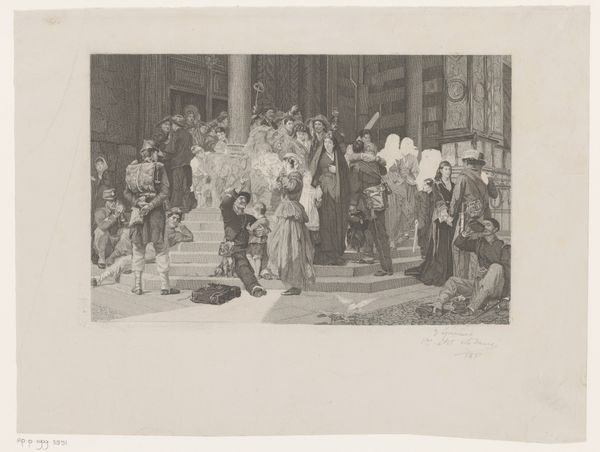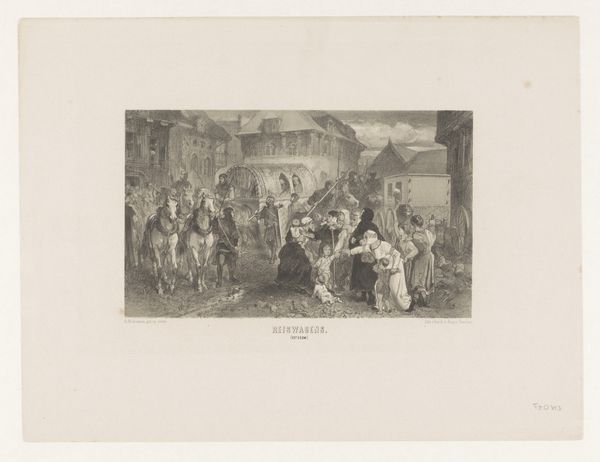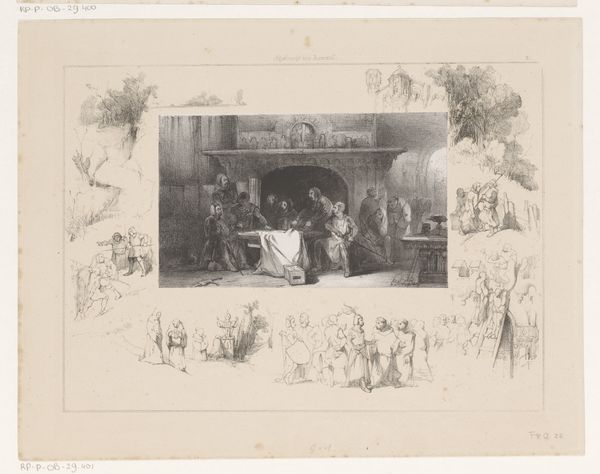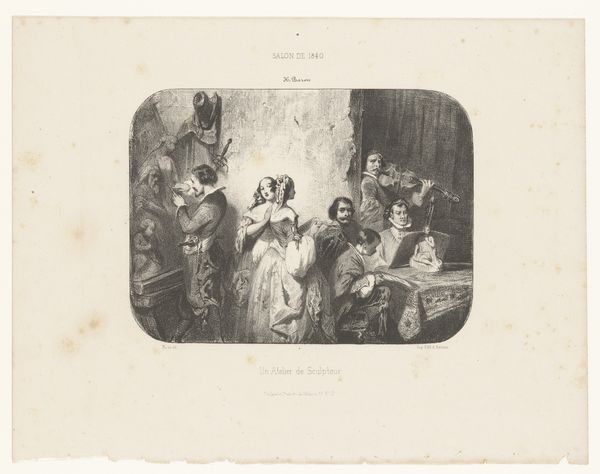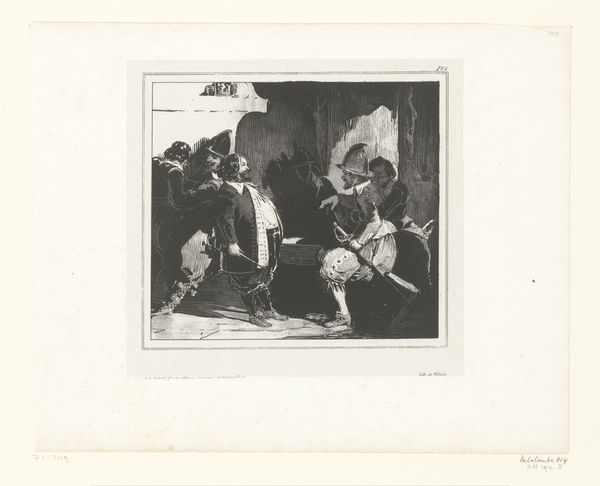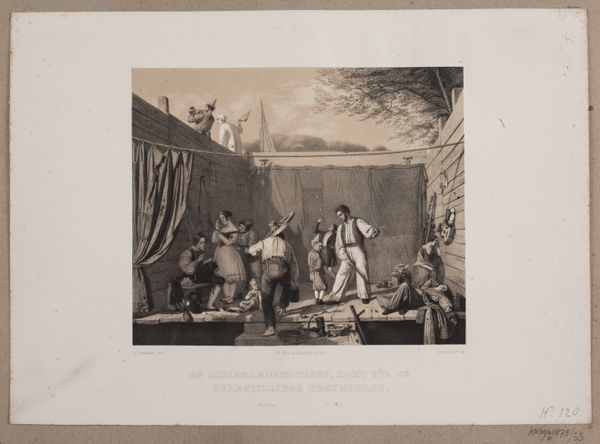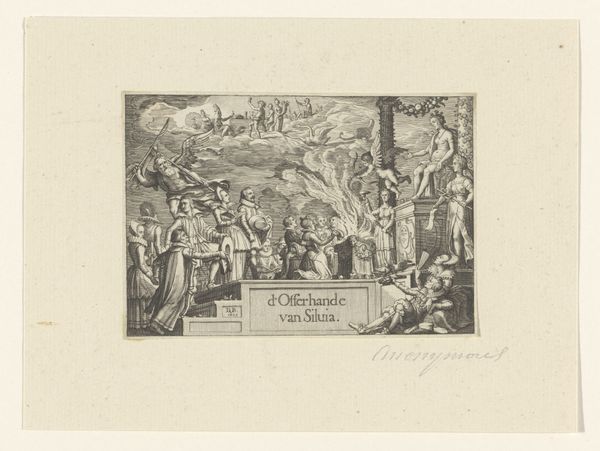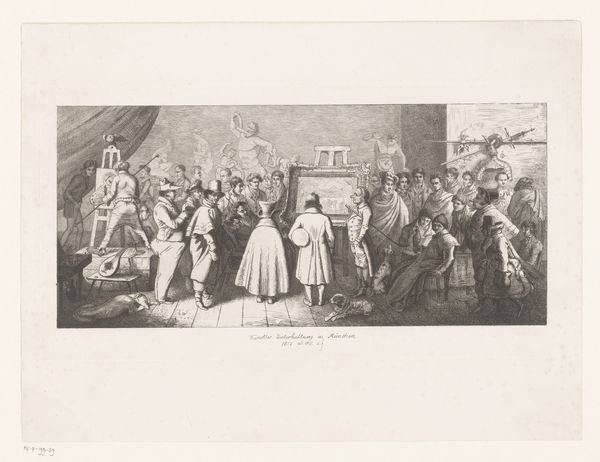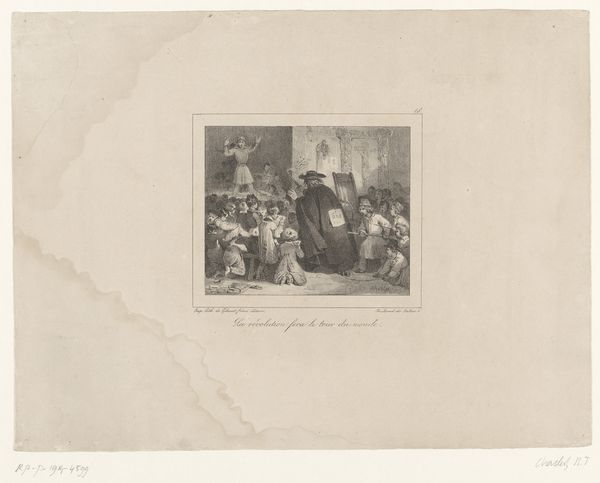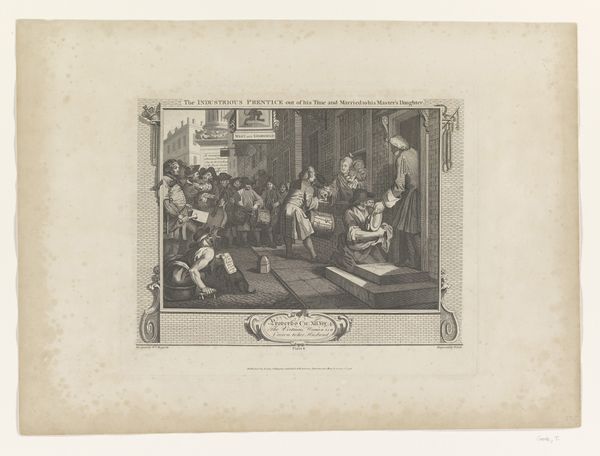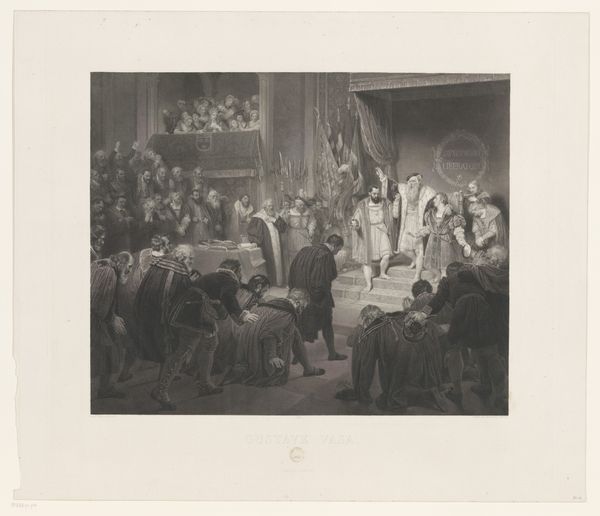
print, etching, engraving
#
portrait
#
neoclacissism
#
narrative-art
# print
#
etching
#
figuration
#
line
#
history-painting
#
academic-art
#
engraving
Dimensions: height 249 mm, width 340 mm
Copyright: Rijks Museum: Open Domain
Jean-Pierre Norblin de la Gourdaine made this etching, "Alexander and Apelles," using metal plates and acid to create a scene from antiquity. Etching’s reliance on the skilled hand to create intricate, light-filled scenes allowed the artist to play with tone and texture, as seen in the clothing of the figures. The story depicted is how Alexander the Great permitted only Apelles to paint his portrait. Norblin would have prepared a copper plate with wax, drawn his composition, and then immersed the plate in acid to bite the design into the metal. After removing the wax, he would ink the plate, carefully wiping the surface to leave ink only in the etched lines, before running it through a press. The linear precision of the etched line allowed for the controlled and deliberate layering of detail to give a sense of depth to the scene. Norblin used these traditional art materials to connect himself to a lineage of classical storytelling and celebrate the skill and artistry of the etcher’s hand. Appreciating the process helps us understand this work, and challenges the boundaries of fine art and craft.
Comments
No comments
Be the first to comment and join the conversation on the ultimate creative platform.
